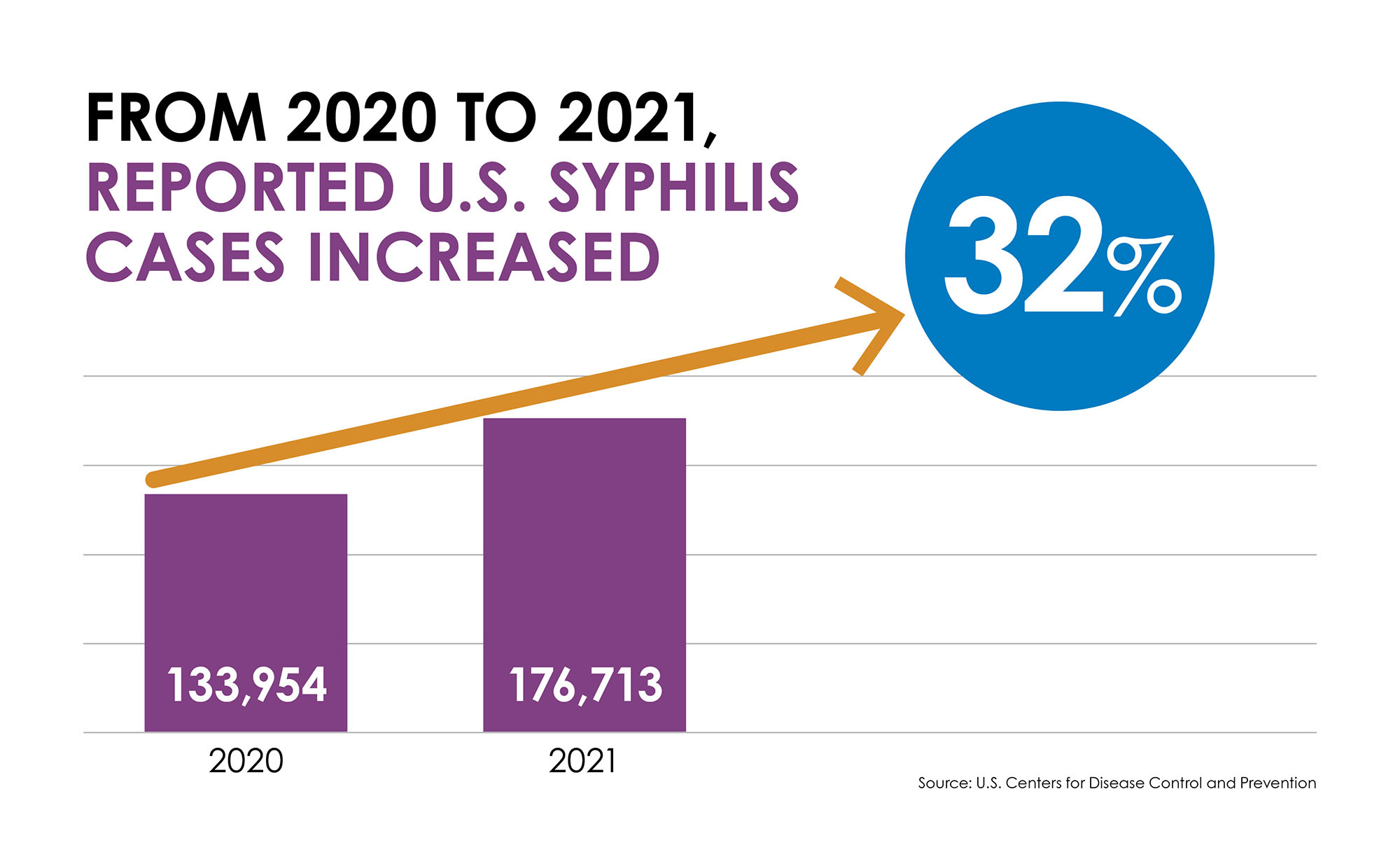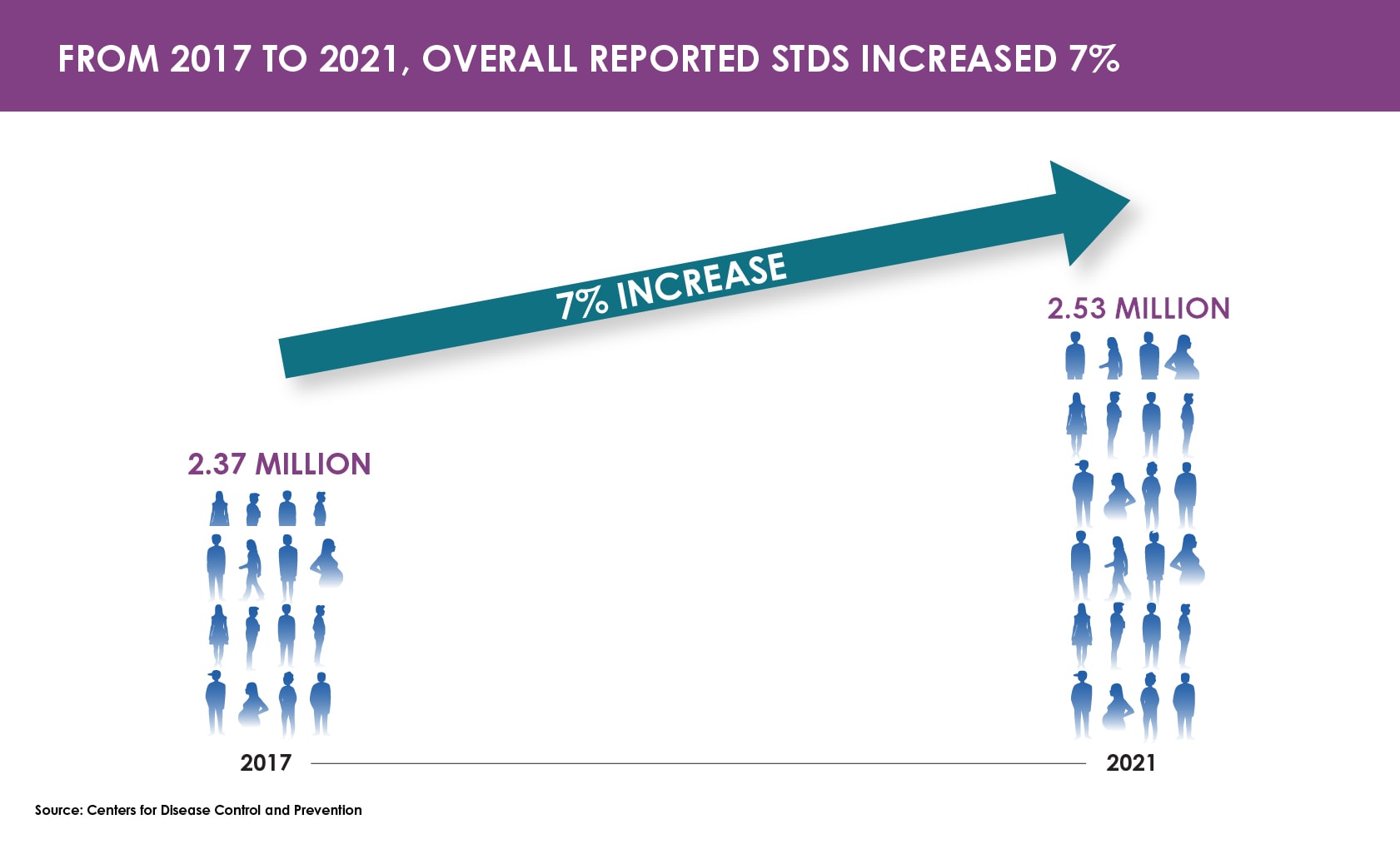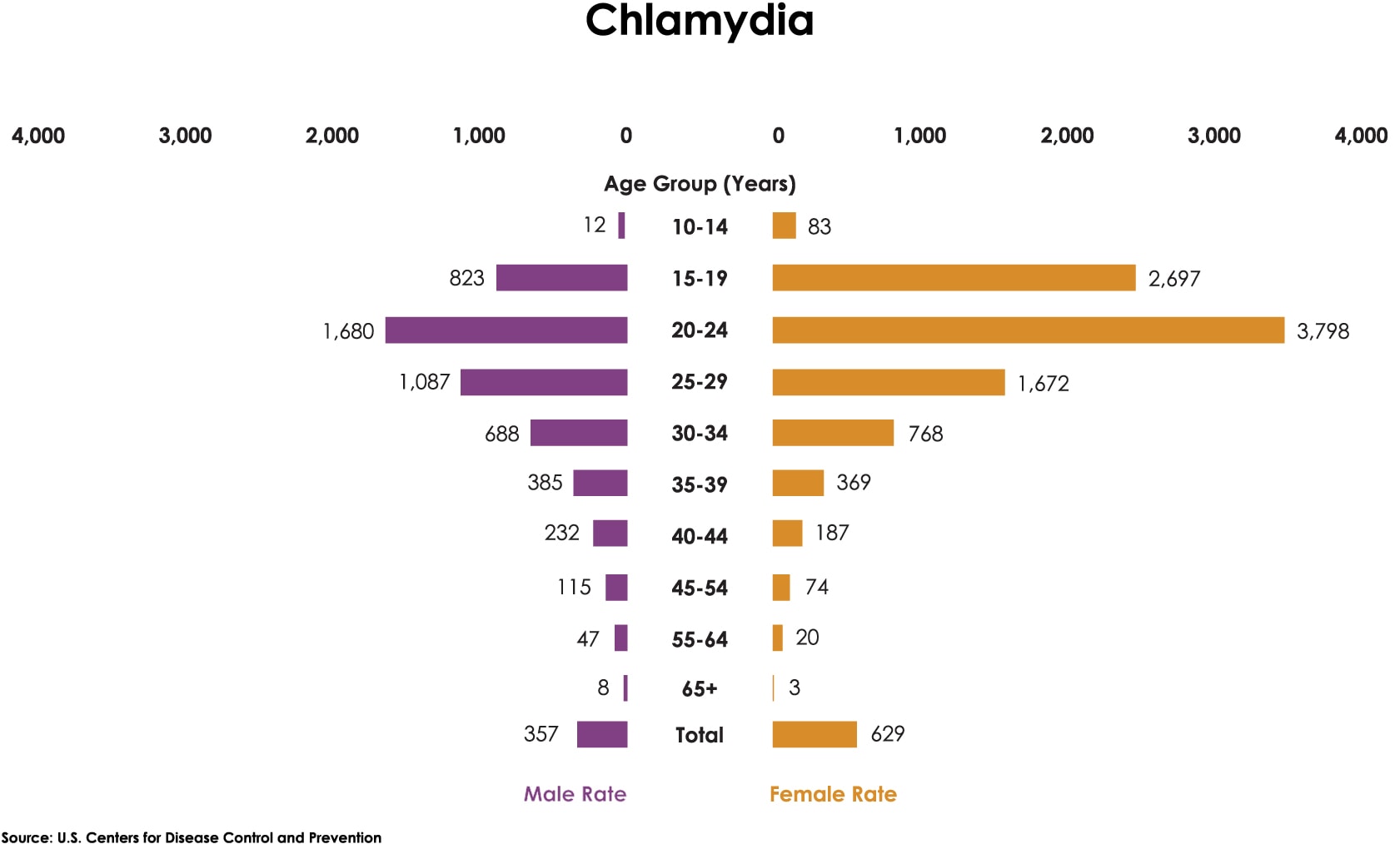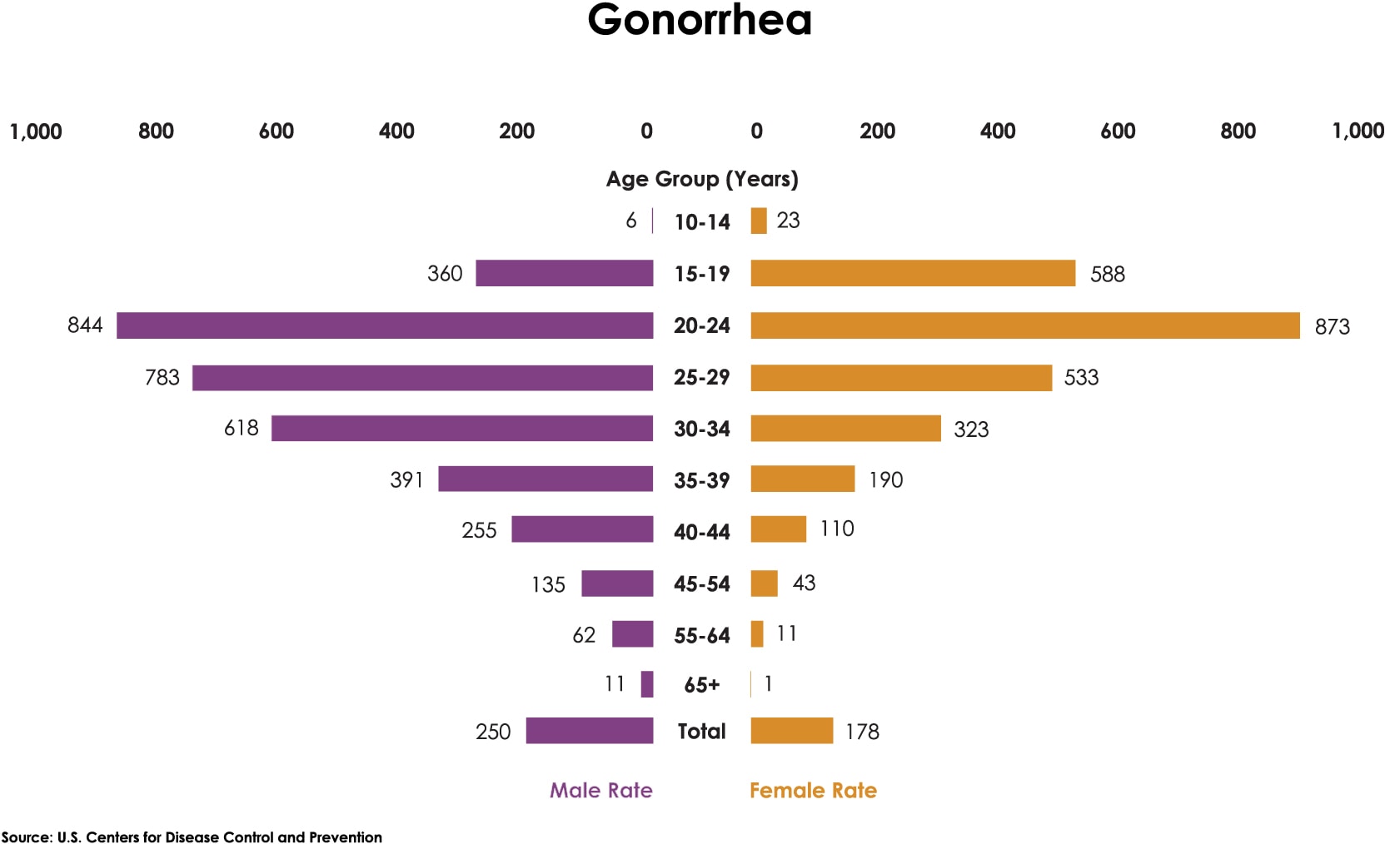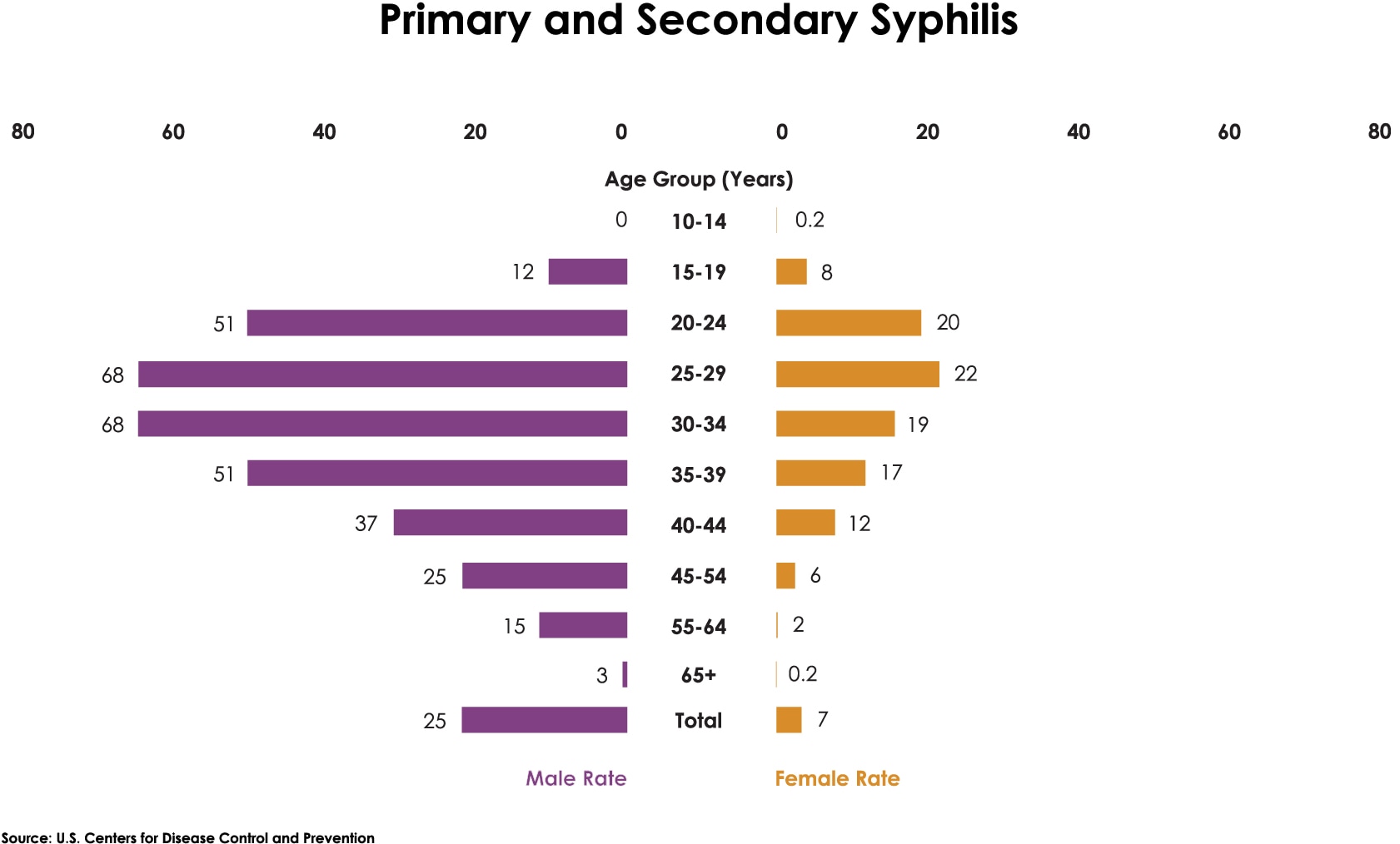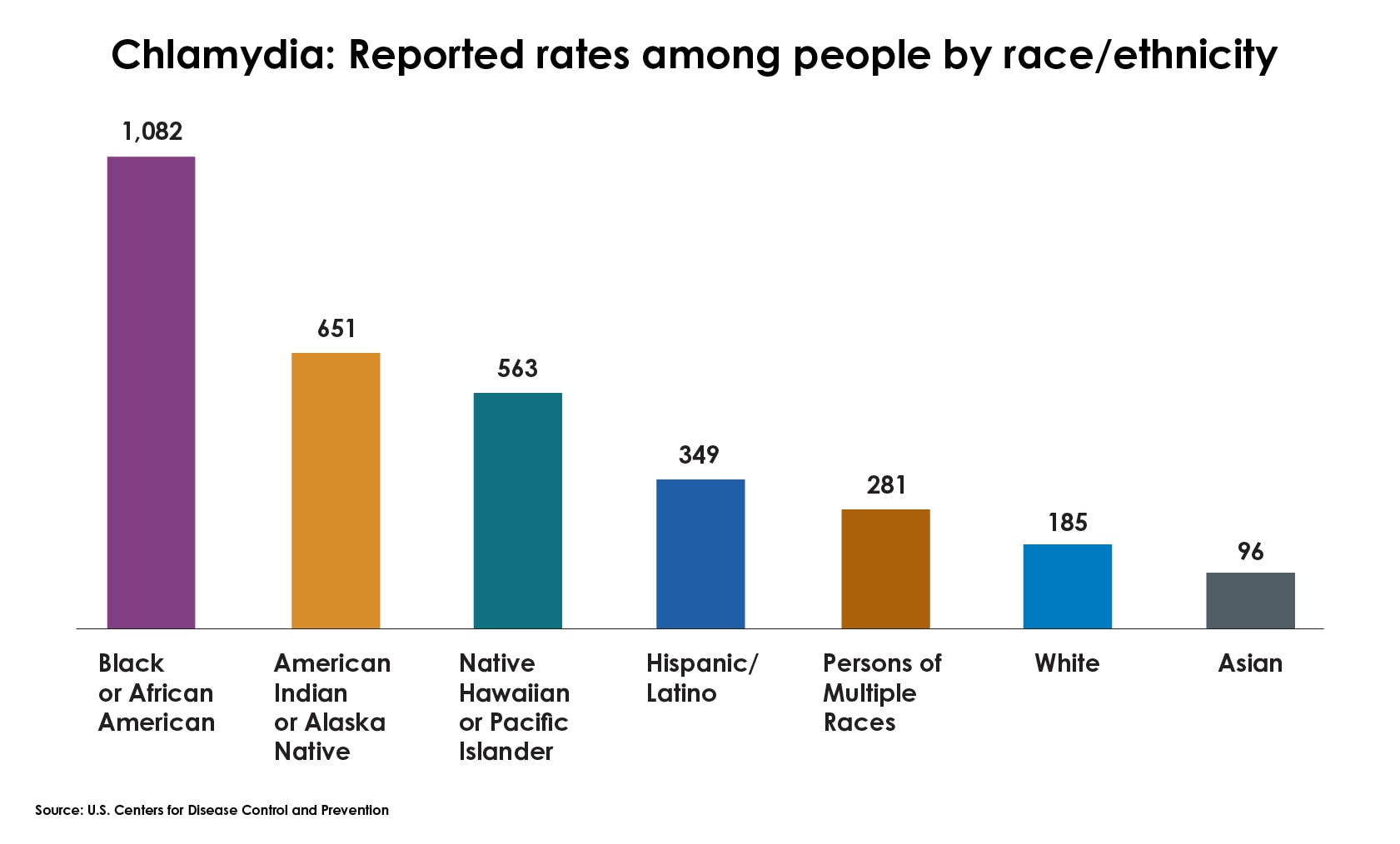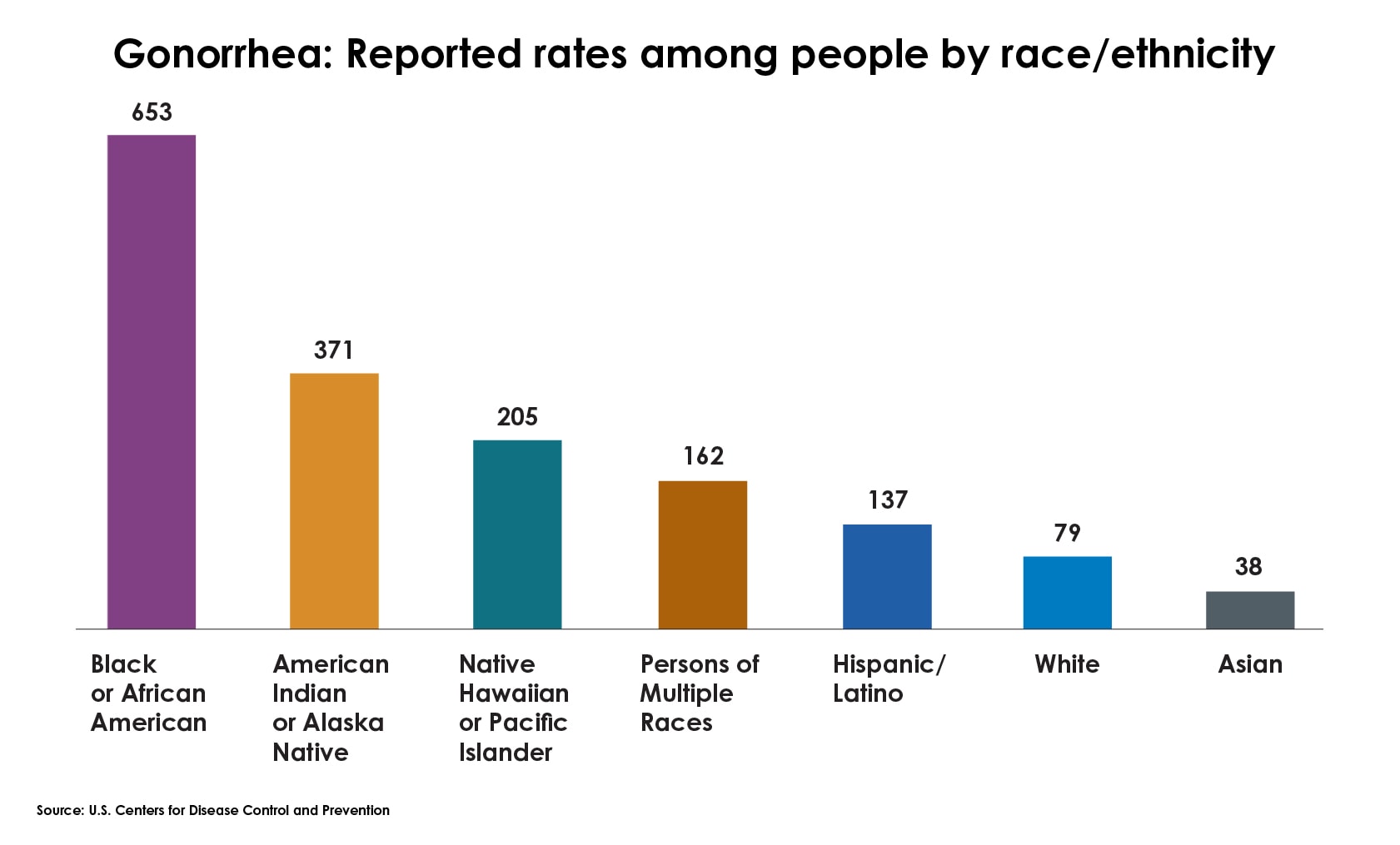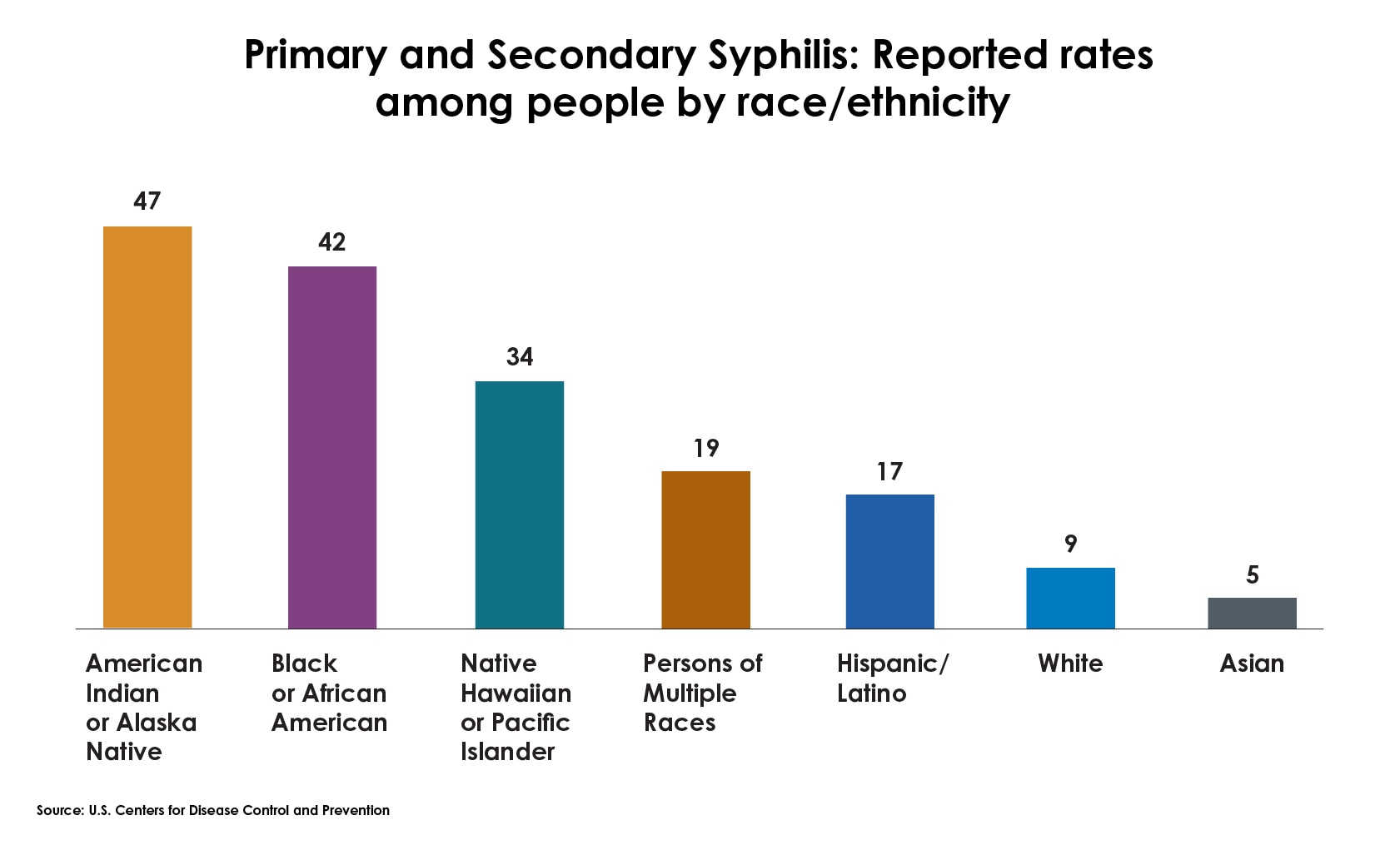STD Multimedia Resources
The high-resolution, public domain visuals below are available for use in your publication. This page will be updated as new media resources become available.
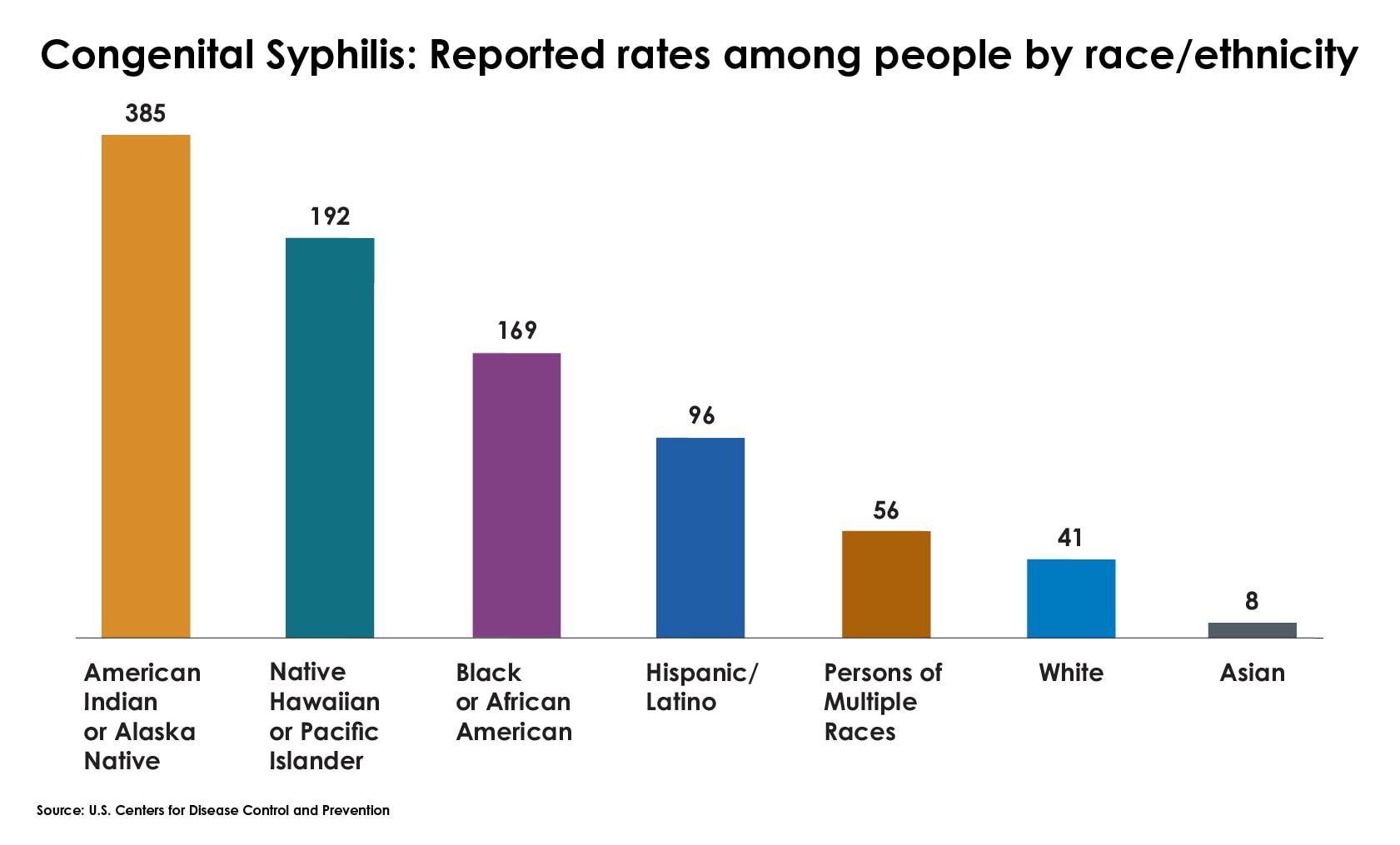
Congenital syphilis
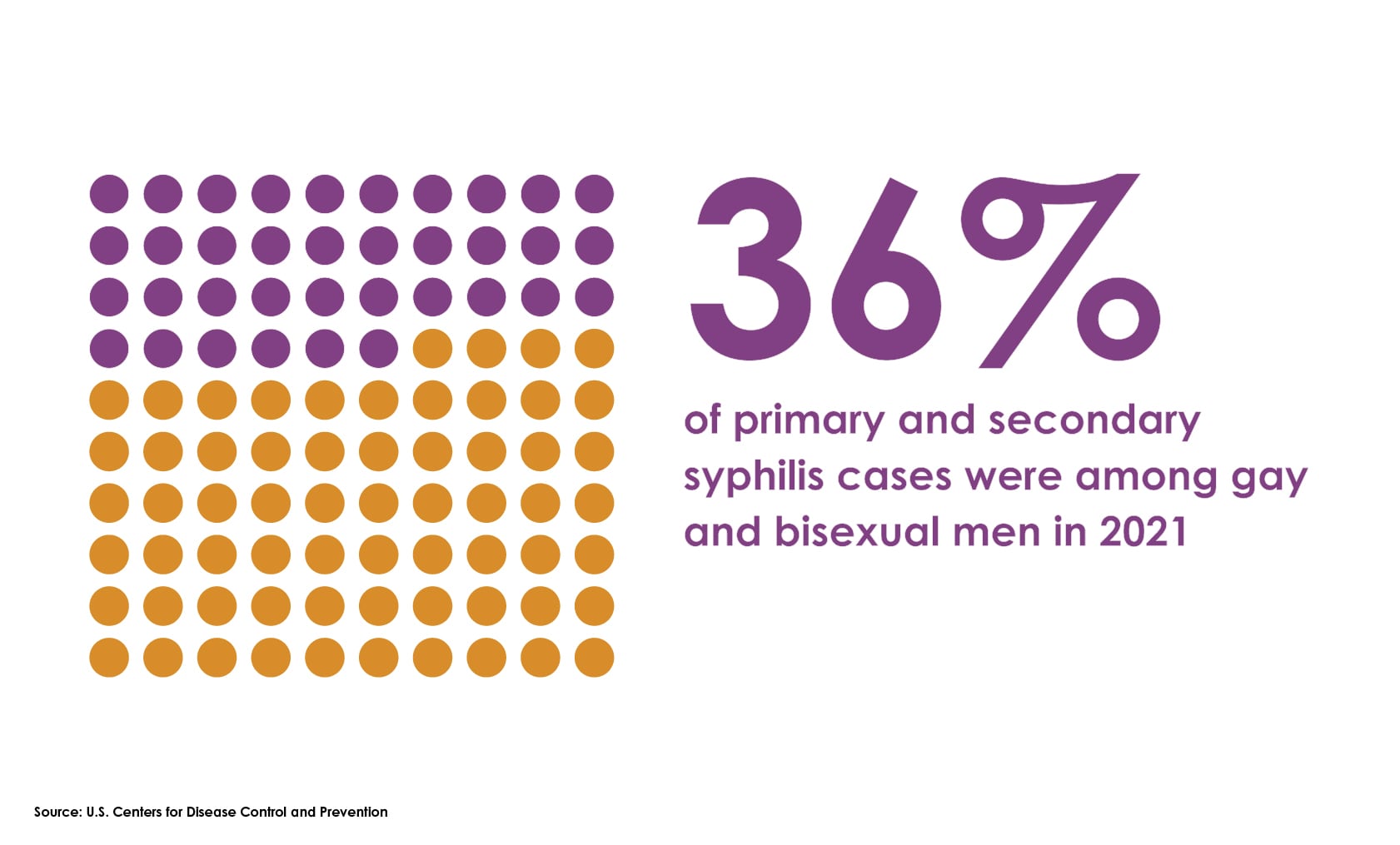 [JPG - 168 KB]
[JPG - 168 KB]36% of primary and secondary syphilis
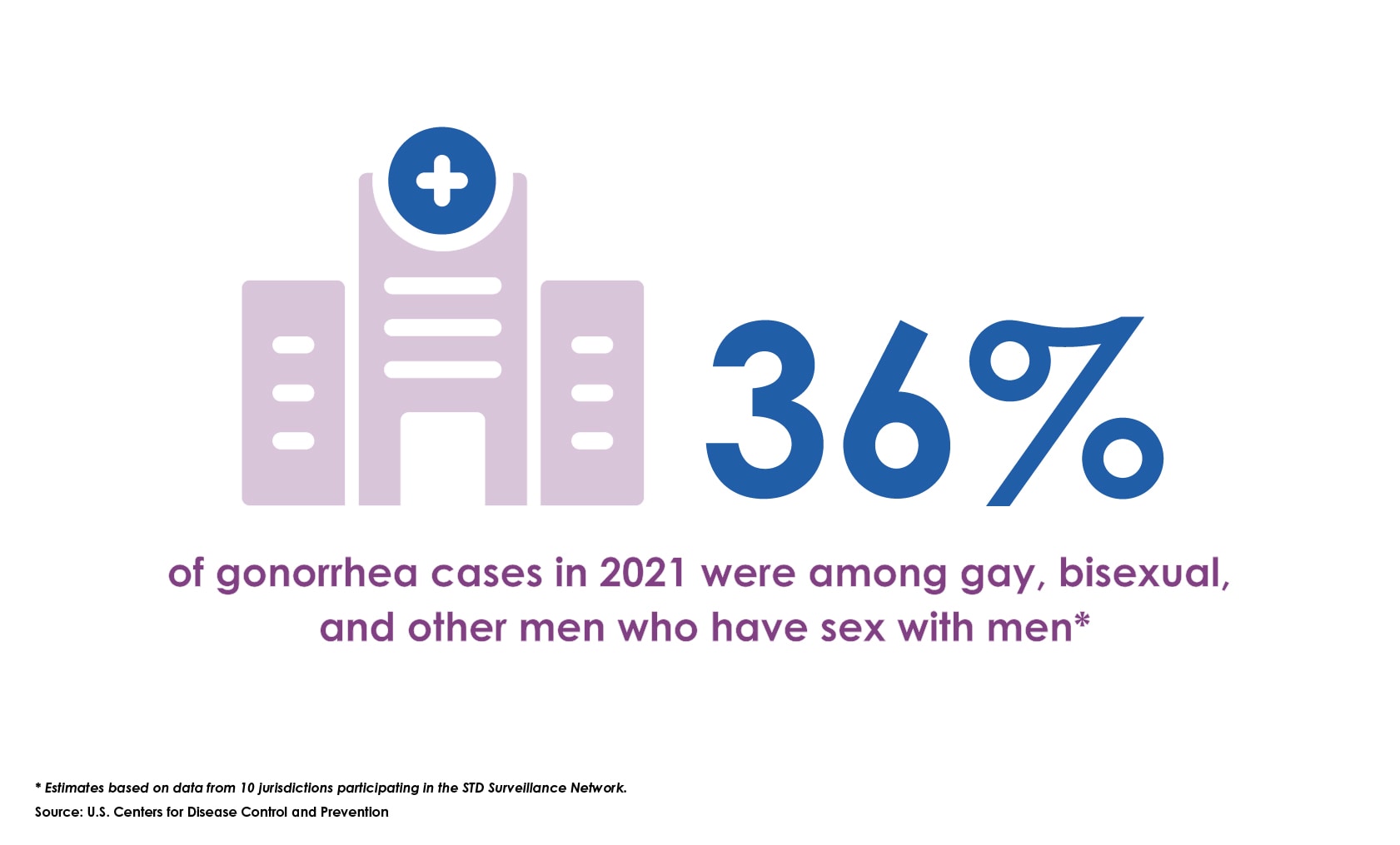
36% of gonorrhea cases in 2021
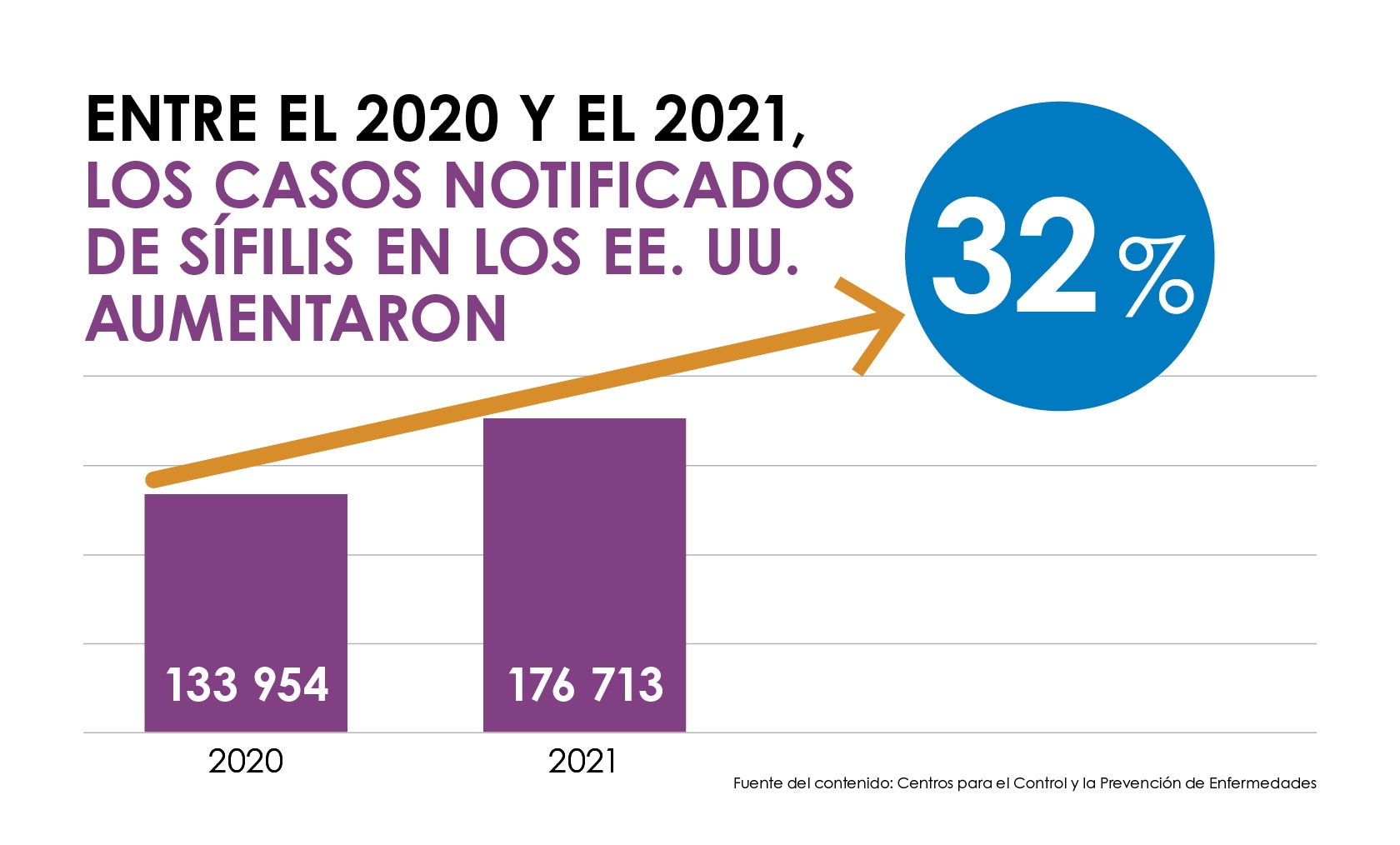
Casos semanales reportados de ETS en EE.UU.: 2020 comparado al 2021
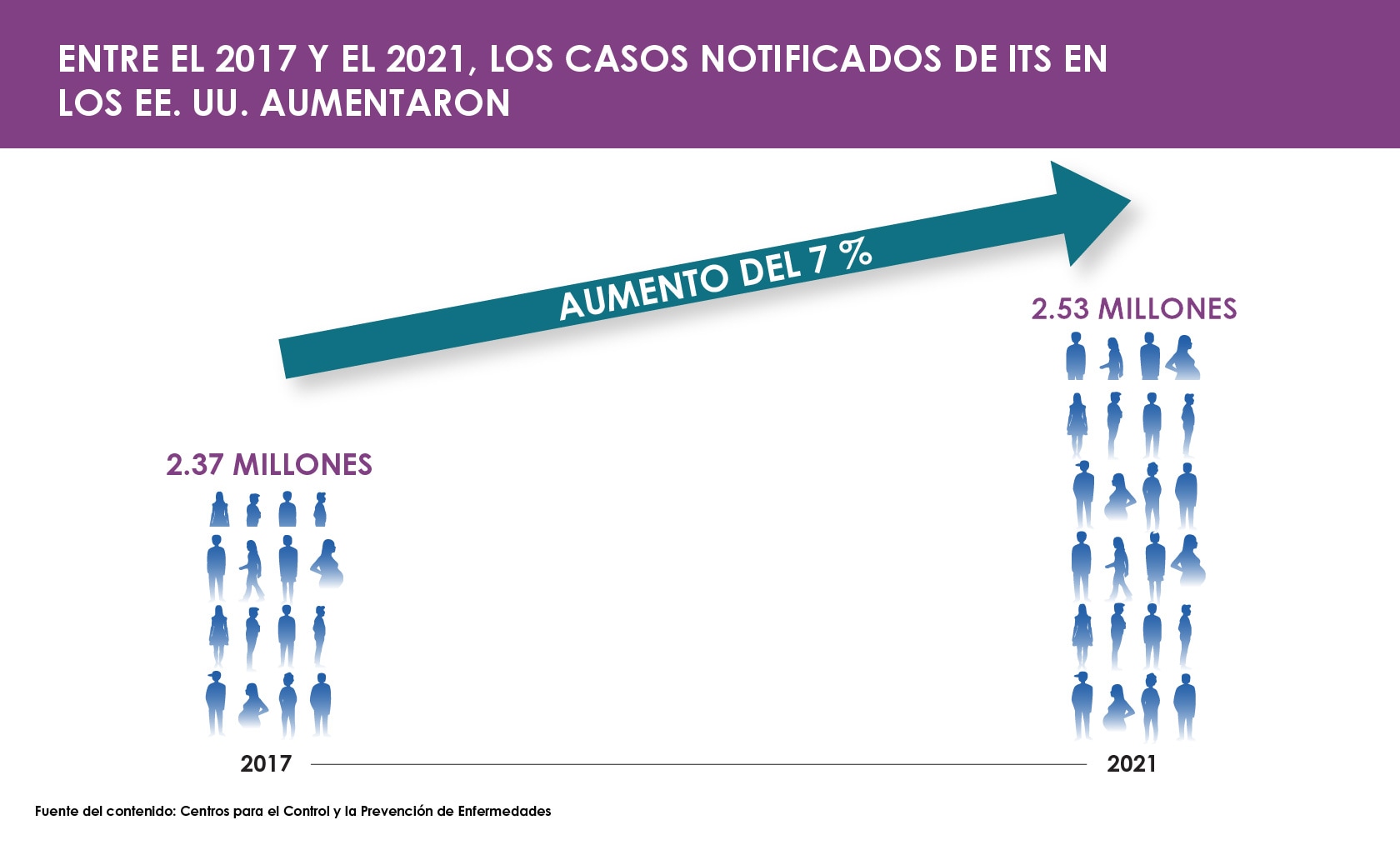
La sífilis en recién nacidos está aumentando en los Estados Unidos
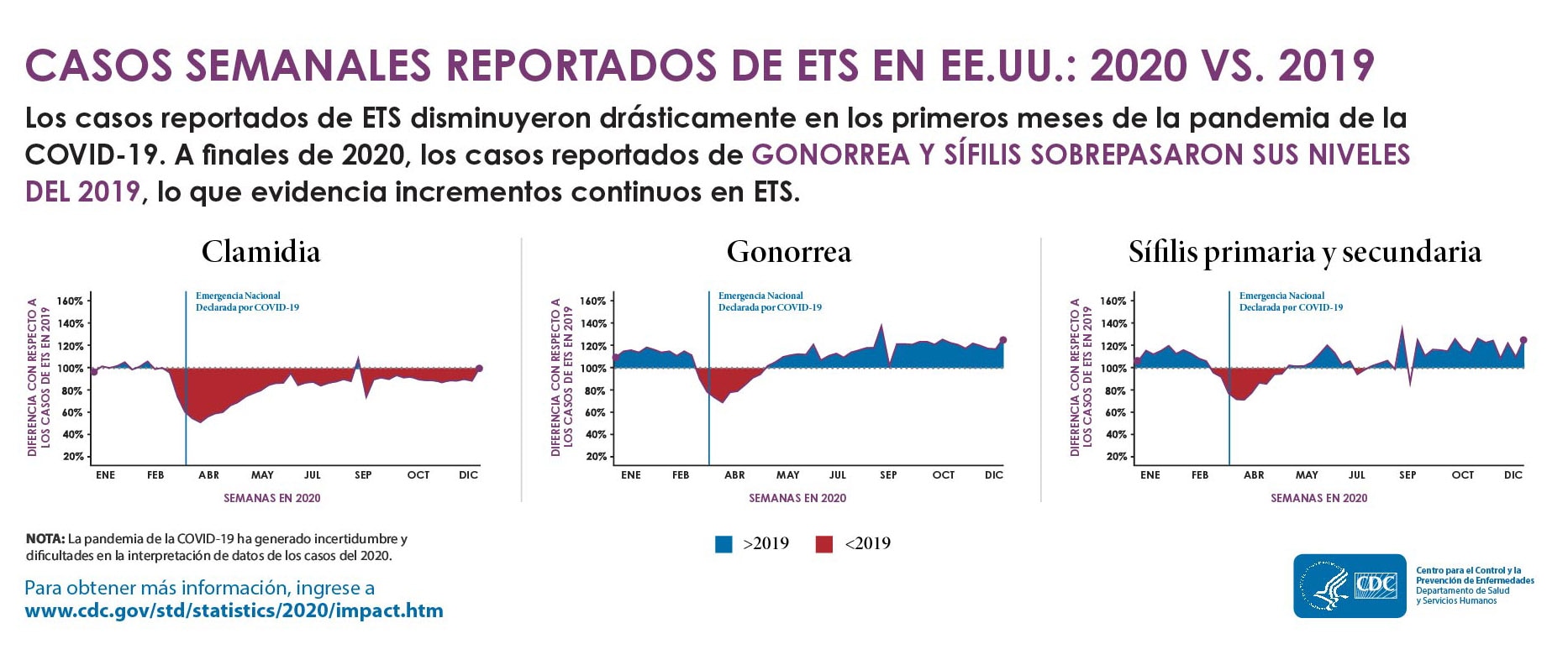
Casos semanales reportados de ETS en EE.UU.: 2020 comparado al 2019
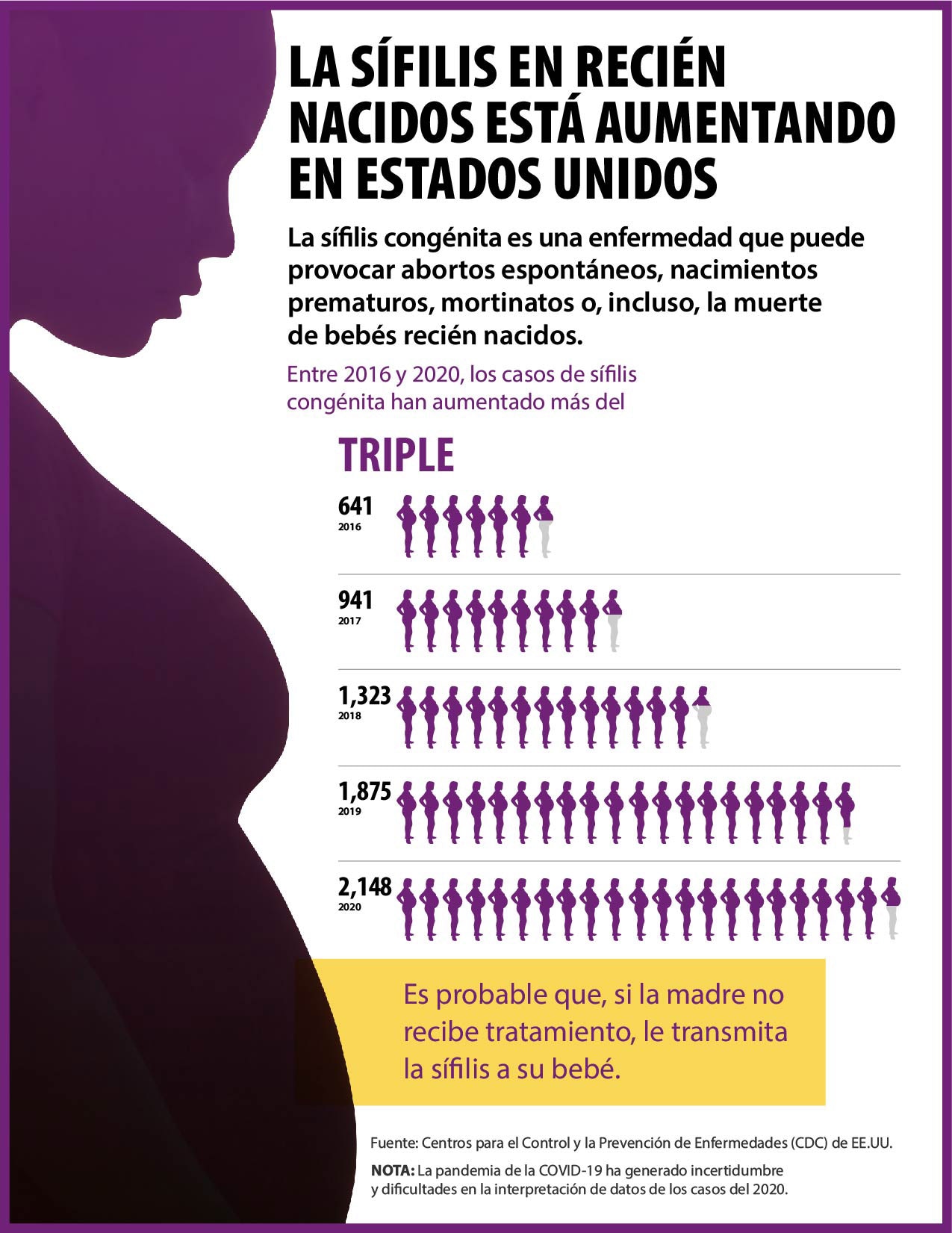
La sífilis en recién nacidos está aumentando en los Estados Unidos
Every case of syphilis among newborns (congenital syphilis) is one too many when testing and treatment can save lives.
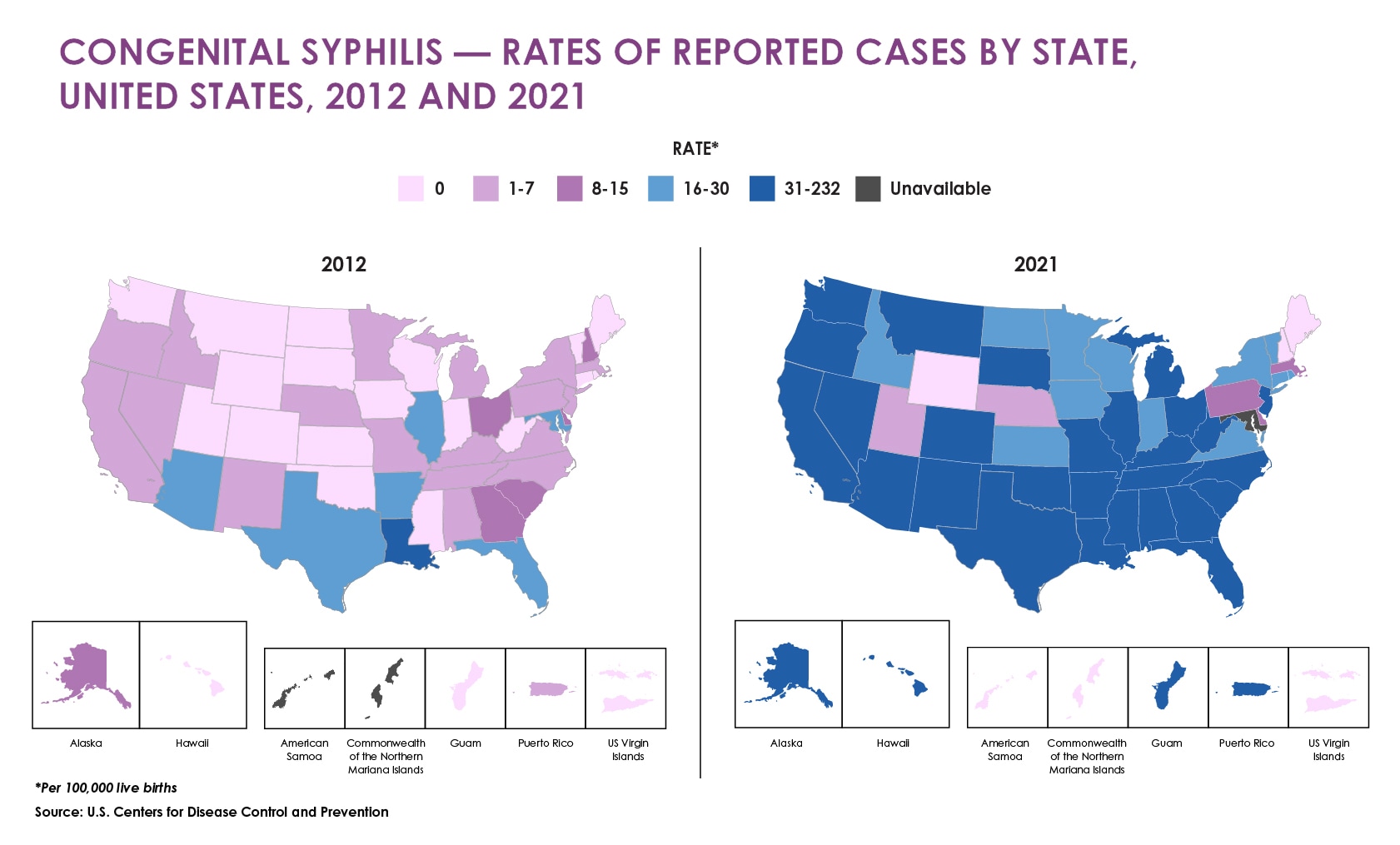
Congenital Syphilis – Rates of reported cases by state, United States (2012 and 2021)
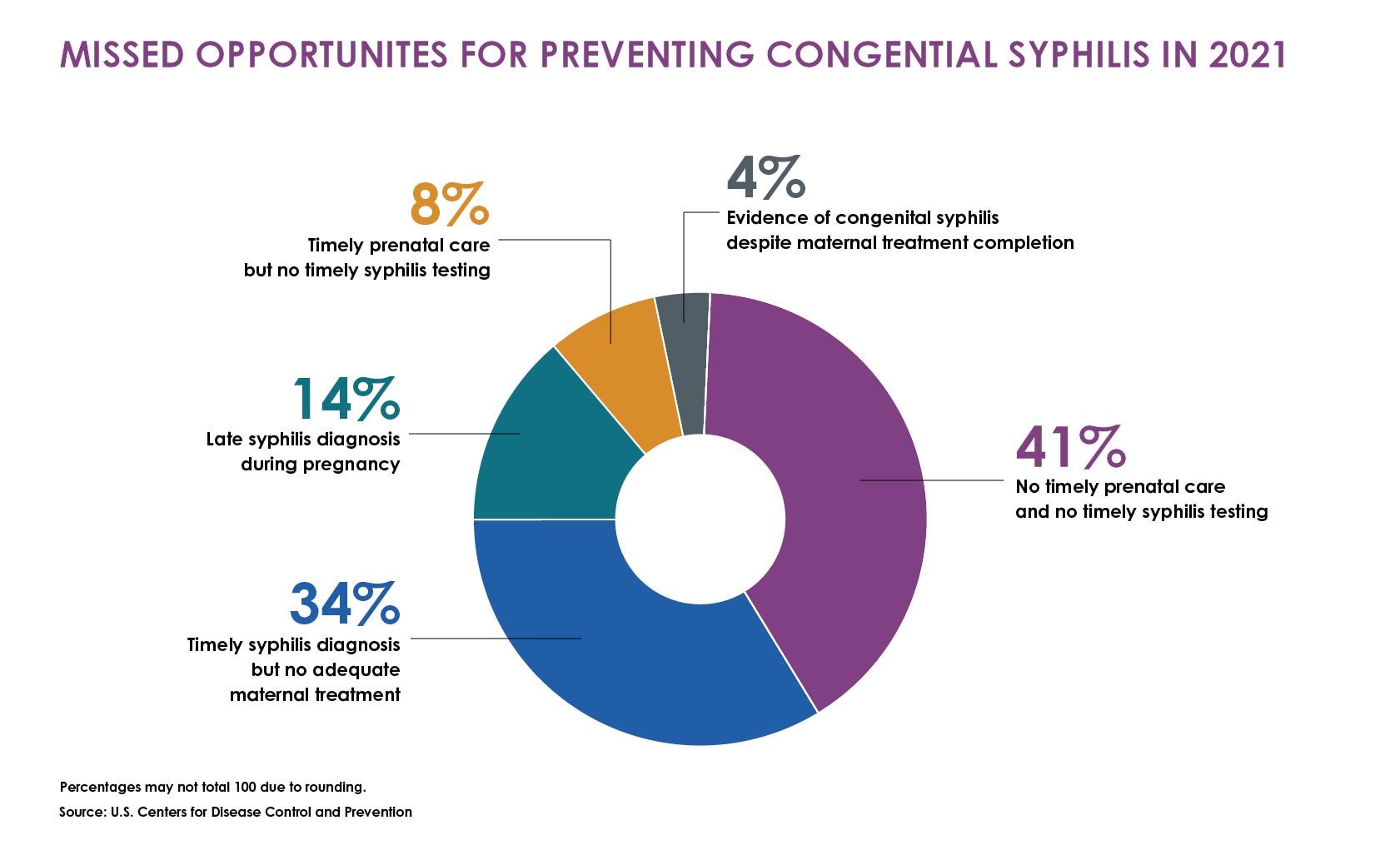
Missed Opportunities for Preventing Congenital Syphilis in 2021
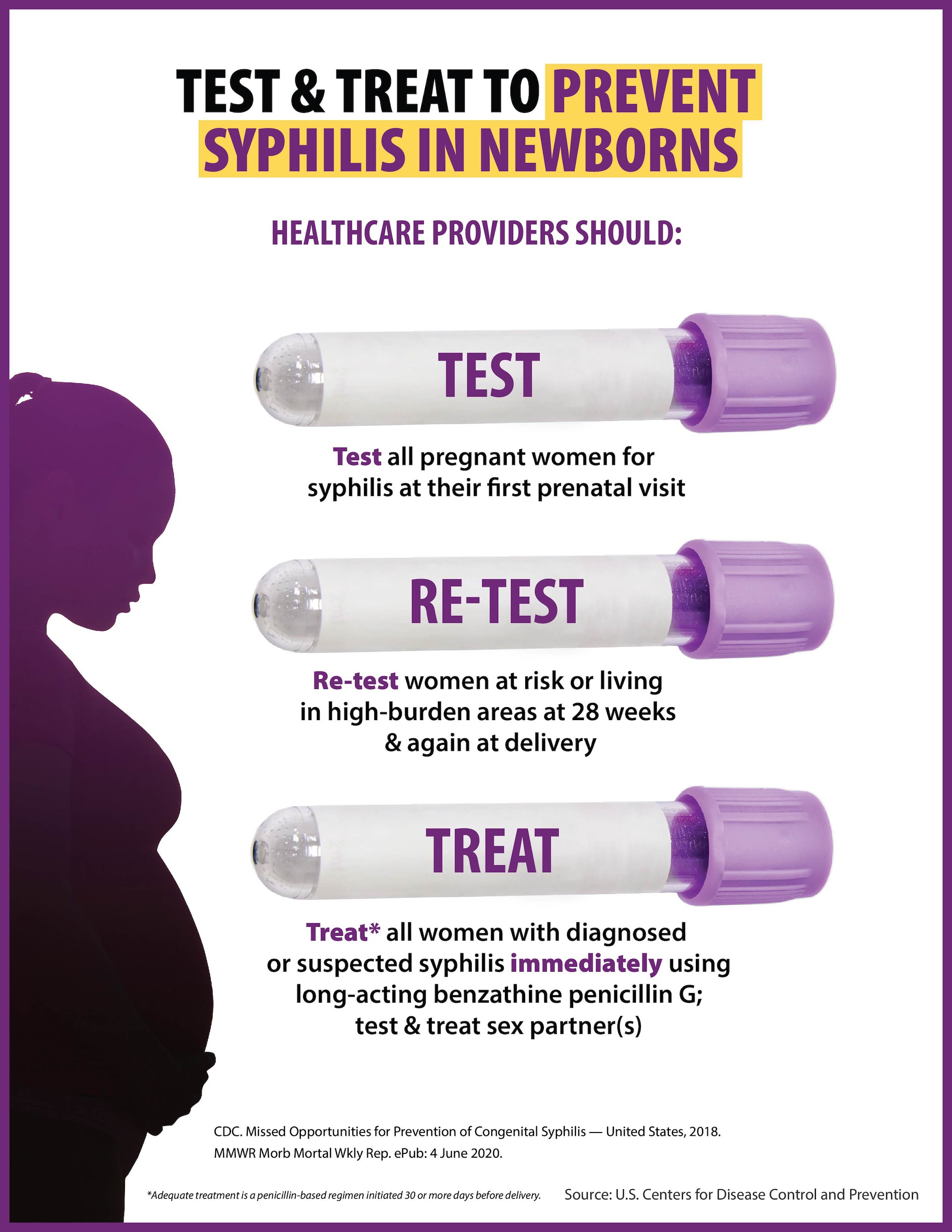
Test & Treat to Prevent Syphilis in Newborns

Congenital Syphilis
CDC’s most recent estimated prevalence estimates show that on any given day in 2018, 1 in 5 people in the U.S. had a sexually transmitted infection (STI). Analyses, published in the journal Sexually Transmitted Diseases, show the burden of diagnosed and undiagnosed STIs in the U.S., and the estimated medical costs associated with STIs.
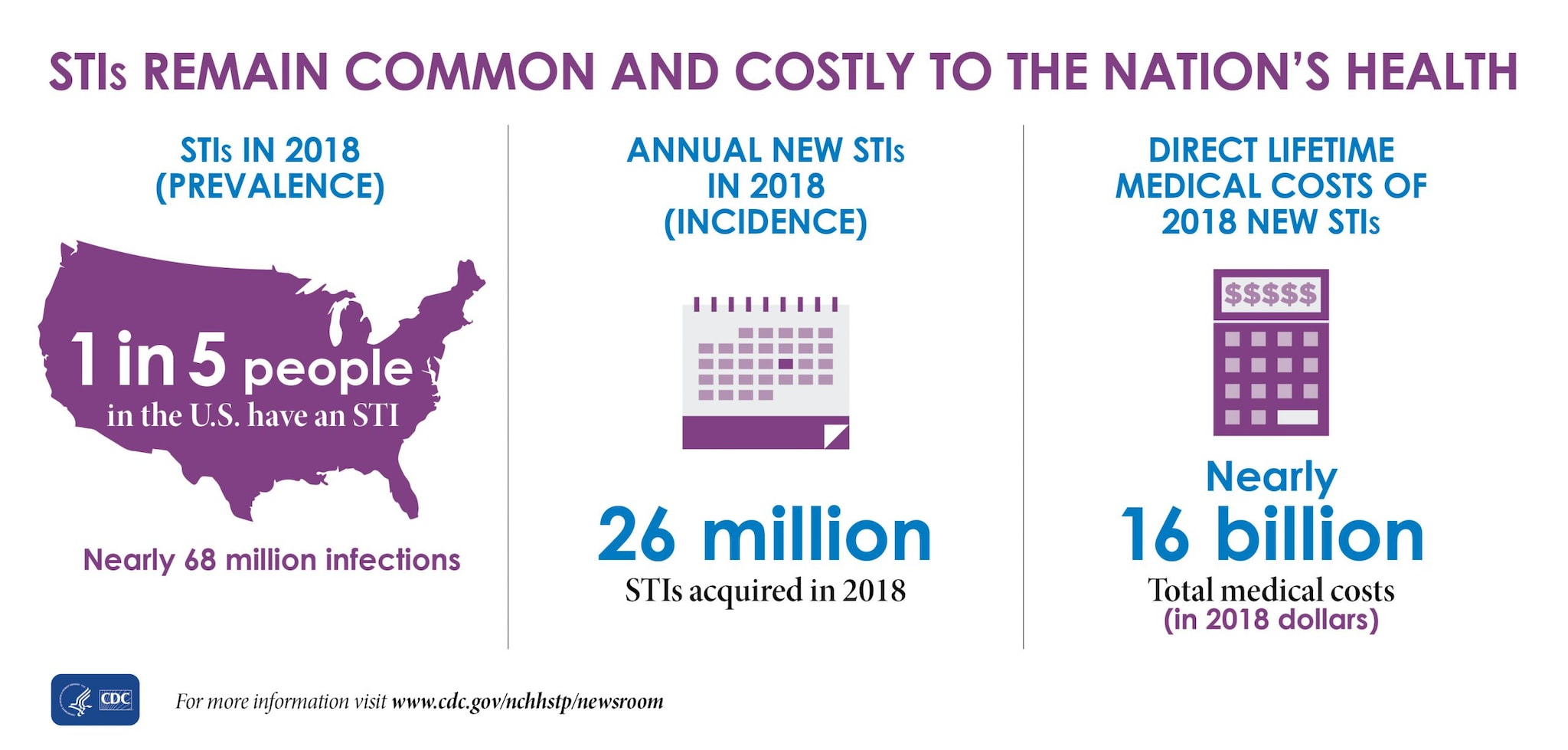 [JPG - 247 KB]
[JPG - 247 KB]STIs Remain Common and Costly to the Nation’s Health
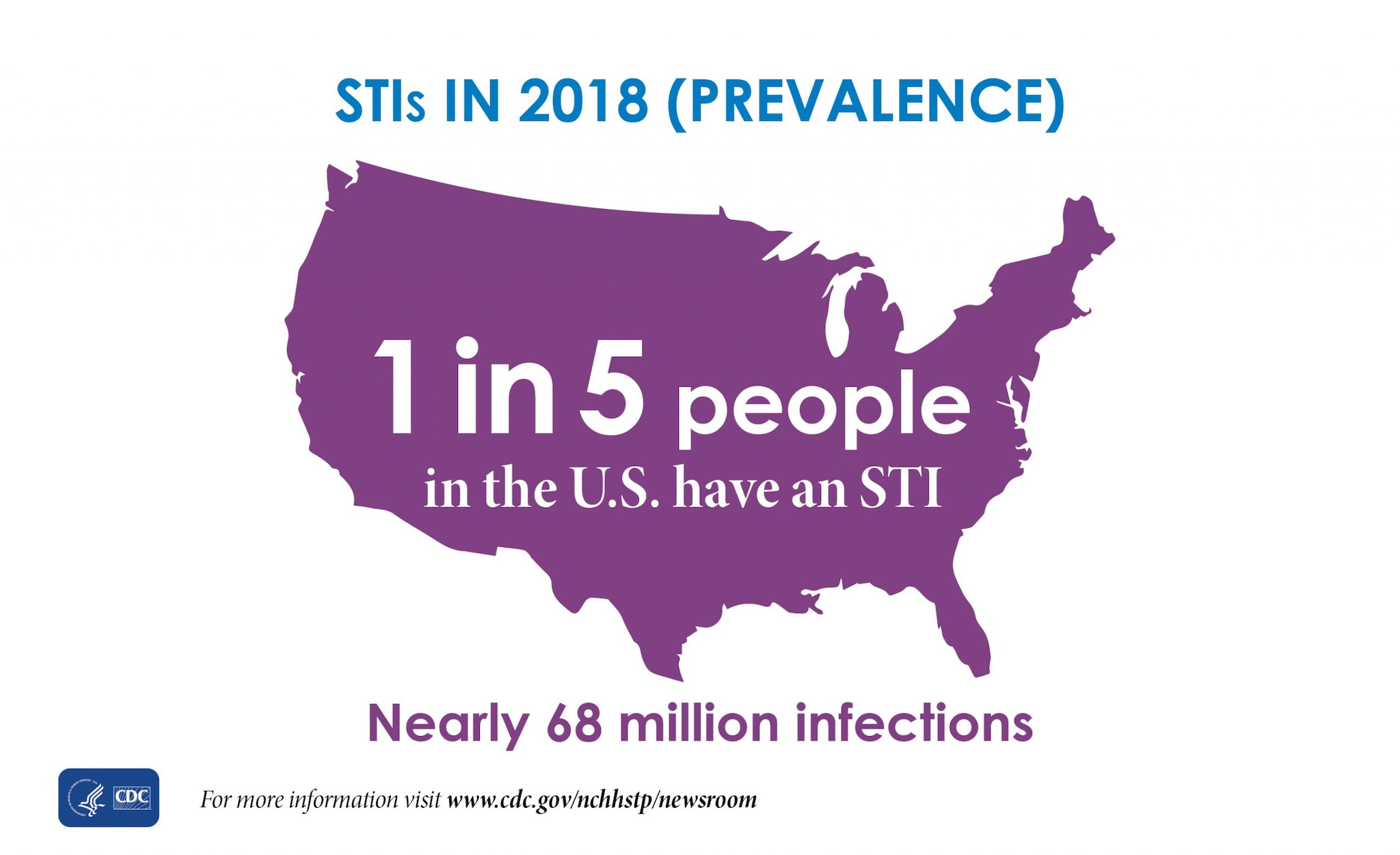 [JPG - 181 KB]
[JPG - 181 KB]STIs in 2018 (Prevalence)
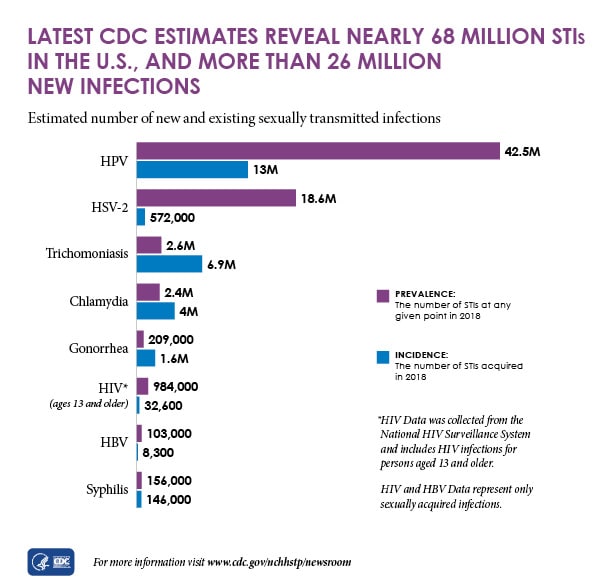 [JPG - 92 KB]
[JPG - 92 KB]Latest CDC Estimates Reveal Nearly 68 Million STIs in the U.S., and 27 Million New Infections
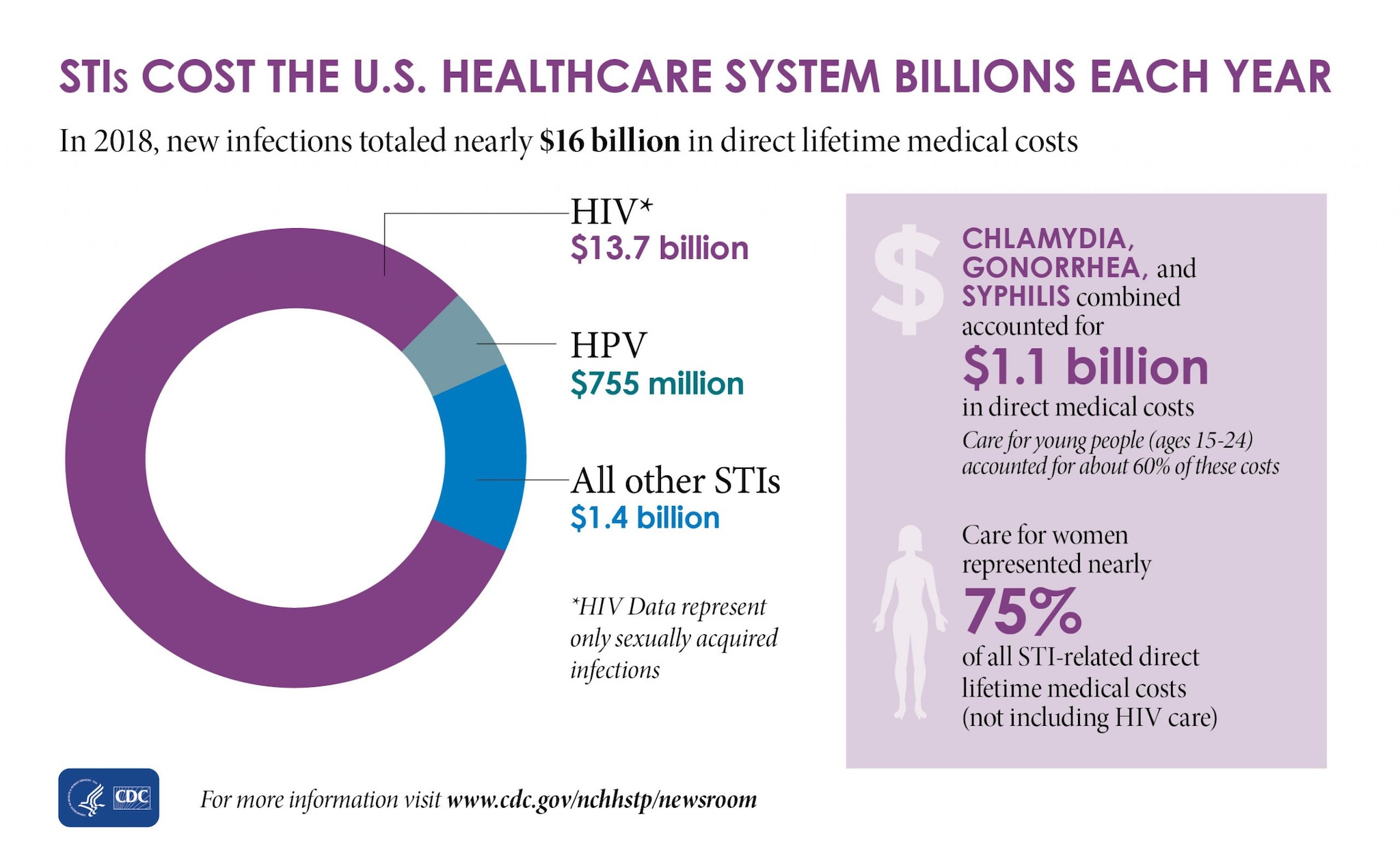 [JPG - 280 KB]
[JPG - 280 KB]STIs Cost the U.S. Healthcare System Billions Each Year
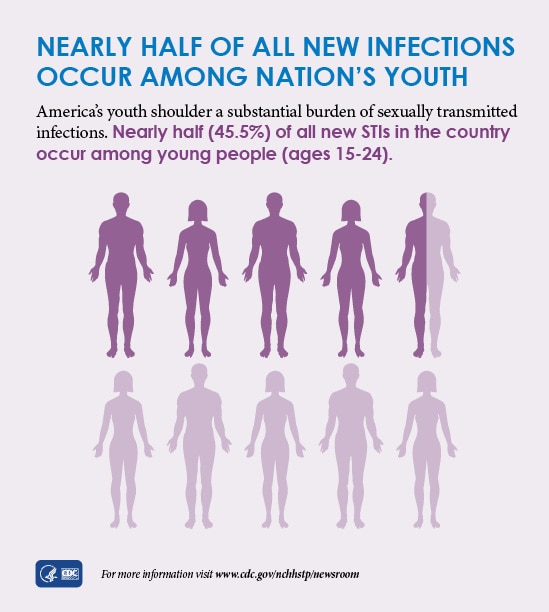
Nearly Half of All New Infections Occur Among Nation’s Youth
